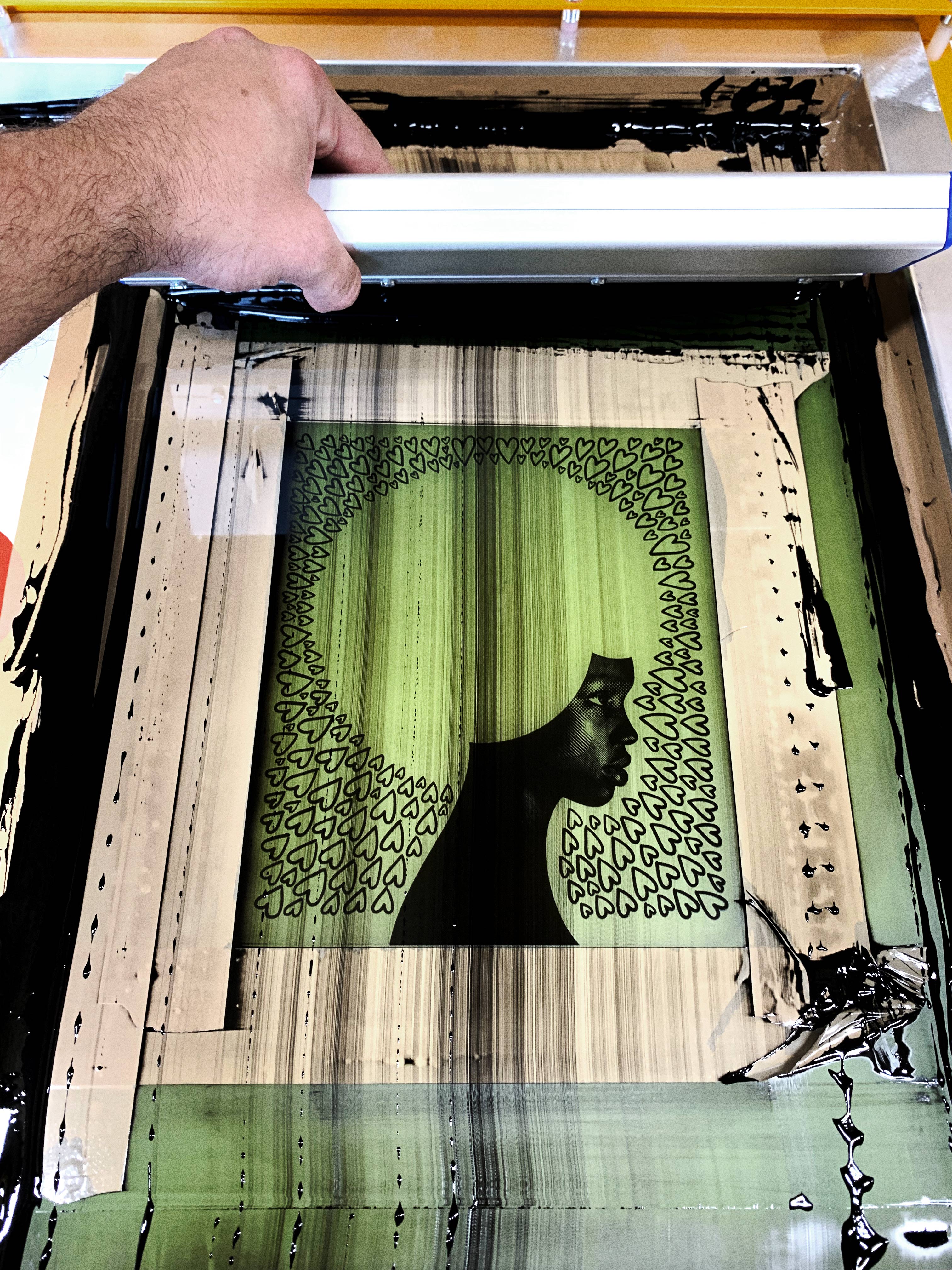The Important Guide to Recognizing Screen Printing and Its Versatile Uses
Screen printing has an abundant history that goes back to old times, advancing into a sophisticated method utilized across different sectors today. This guide discovers the ins and outs of the screen printing procedure, describing its applications in home, marketing, and style design - 10:9 Design reviews. Comprehending these principles can open creative capacity for both business and creative projects. The complying with sections will certainly reveal necessary pointers and strategies to improve one's screen printing endeavors
The Background of Screen Printing
Although screen printing has origins that trace back centuries, its advancement mirrors the creative and technological improvements of different societies. Coming from old China, the strategy was initially made use of for embellishing textiles and later spread to Japan, where it ended up being indispensable to Ukiyo-e woodblock printing. The method moved to Europe in the 18th century, where it gained appeal amongst artisans and commercial printers. The development of image solution in the 20th century reinvented screen printing, permitting more detailed designs and greater effectiveness. Artists like Andy Warhol further drove its appeal, utilizing the tool to develop renowned works that mixed commercialism and art. By the late 20th century, screen printing had actually developed itself as a functional method, used in vogue, advertising and marketing, and art. Today, it remains to develop, integrating digital modern technology and broadening its applications across numerous sectors.
The Screen Printing Process Explained
Screen printing changes creative visions into substantial designs via a series of exact actions. An image is created and then transferred onto a screen, generally made of great mesh material extended over a structure. A light-sensitive solution is related to the screen, which is subjected to light, solidifying in locations not covered by the picture. After rinsing the unhardened emulsion, a stencil is formed.
Next, the screen is put over the substrate, whether it be material, paper, or an additional material. Ink is then pushed via the open areas of the pattern using a squeegee, depositing the style onto the substratum listed below. This procedure can be repeated for numerous shades, needing separate displays for each color. Finally, the printed product is healed utilizing warm to guarantee the ink sticks effectively, leading to a long lasting, vivid style ready for usage.
Types of Screen Printing Techniques

Furthermore, specialized techniques, such as discharge screen printing, remove dye from the material to create softer prints, while foil screen printing uses metallic aluminum foil to accomplish a shiny coating (10:9 Design LLC Company). Each technique uses distinctive features, accommodating various innovative requirements and production scales, ultimately broadening the opportunities within the screen printing domain name
Applications of Screen Printing in Various Industries

Furthermore, the signage and advertising industries utilize screen printing for creating attractive displays and banners. This method permits vibrant shades and intricate layouts that record focus. In electronic devices, screen printing is used for using conductive inks to motherboard, crucial for part links. The home decoration market embraces screen printing to produce distinct layouts on textiles and wall art. Generally, screen printing functions as an important device across diverse areas, boosting products with personalized and visually appealing graphics.
Tips for Effective Screen Printing Projects
While carrying out a screen printing project, careful focus to detail can considerably boost the final outcome. Initially, selecting top quality materials is essential; this consists of the screen, inks, and substrates. Utilizing suitable mesh counts can influence ink deposition and information resolution. Prep work is similarly vital; detailed cleaning of displays and proper direct exposure times ensure crisp prints.
Next, precise enrollment is crucial for multi-color prints. Utilizing positioning tools can assist attain precise layering. Furthermore, testing prints on scrap products before manufacturing aids identify prospective concerns without squandering sources.

Frequently Asked Questions
What Products Are Best for Screen Printing on Material?
Cotton and polyester blends are perfect for screen printing on textile due to their sturdiness and ink absorption. In addition, specialty fabrics like silk or canvas can create distinct textures and coatings, improving the total style top quality.
Exactly how Do I Tidy and Maintain Screen Printing Devices?
To preserve and clean up screen printing tools, one should regularly wash displays with appropriate solvents, check mops for wear, lubricate relocating components, and store all products in a dry, dust-free atmosphere to lengthen their life-span.
What Are the Environmental Influences of Screen Printing?
Screen printing can have considerable ecological impacts, consisting of chemical waste from inks and solvents, water use throughout cleaning processes, and power consumption. Lasting practices and eco-friendly materials are crucial for reducing these adverse results.
Can Screen Printing Be Done at Home Successfully?
Screen printing can be properly done at home with the right materials and methods. Enthusiasts can develop quality prints, though success depends on their skill level, devices, and understanding of the procedure entailed.
What Are the Prices Linked With Starting a Display Printing Business?

Starting a screen printing business involves prices for devices, materials, and workspace. First expenditures normally range from a few hundred to numerous thousand bucks, depending upon the range, high quality of machinery, and wanted manufacturing capability.
Screen printing has an abundant background that dates back to ancient times, evolving right into an innovative strategy utilized across numerous markets today. One more technique, rotating screen printing, utilizes cylindrical displays, promoting constant printing on fabric rolls, therefore boosting effectiveness for large-scale productions. In addition, specialized techniques, such as discharge screen printing, get rid of color from the read more fabric to develop softer prints, while foil screen printing uses metallic aluminum foil to accomplish a glossy coating. In the fashion field, screen printing is commonly made use of to produce dynamic styles on clothing, enabling brands to showcase their one-of-a-kind styles. Cotton and polyester blends are excellent for screen printing on material due to their durability and ink absorption.